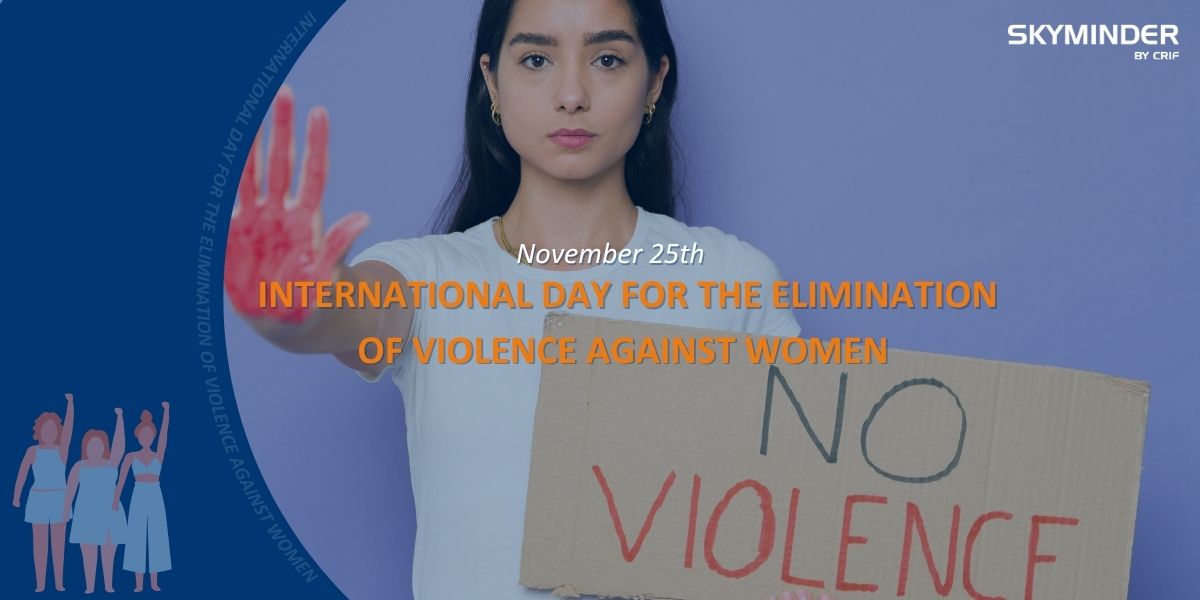International Day for the Elimination of Violence against Women: spotlight on digital violence
Every year on November 25th, the world comes together to mark the International Day for the Elimination of Violence against Women. This day is more than symbolic; it is a call to action to end one of the most pervasive human rights violations of our time. Violence against women and girls affects nearly 1 in 3 women worldwide, undermining progress in poverty reduction, peace, and sustainable development.
The importance of this day comes from the fact that violence against women is not just a private issue, but a global crisis. It impacts communities, economies, and societies at large. Recognizing this, the United Nations established this day to raise awareness and mobilize governments, businesses, and individuals to take responsibility in ending gender-based violence.
Historical Background
The observance of 25 November has deep roots in activism and history:
Since 1981, women’s rights activists have marked this date to honor the Mirabal sisters, three political activists from the Dominican Republic murdered in 1960 under Rafael Trujillo’s regime.
In 1993, the UN General Assembly adopted the Declaration on the Elimination of Violence against Women (Resolution 48/104), laying the foundation for global action.
By 2000, the UN officially designated 25 November as the International Day, inviting governments, NGOs, and organizations worldwide to organize awareness activities.
Despite progress, challenges remain: only two out of three countries have outlawed domestic violence, while 37 countries still exempt rape perpetrators from prosecution if they marry their victims, and 49 countries lack laws protecting women from domestic violence.
In 2017, the EU and UN launched the Spotlight Initiative, a global program aligned with the 2030 Agenda for Sustainable Development, aiming to eliminate all forms of violence against women and girls

Roots of Resistance: The Mirabal Sisters and the Legacy of Las Mariposas
The International Day for the Elimination of Violence against Women is deeply rooted in history and cultural memory. It honors the Mirabal sisters (Patria, Minerva, and María Teresa), nicknamed Las Mariposas (“The Butterflies”), Dominican activists who opposed dictator Rafael Trujillo and were assassinated in 1960. Their courage transformed them into enduring symbols of resistance across Latin America, inspiring feminist movements worldwide, while their surviving sister Dedé preserved their legacy through the Mirabal Sisters Foundation and museum. Since 1981, women’s rights activists across Latin America commemorated this date, long before the UN formally recognized it, showing how grassroots activism shaped global awareness. In 1993, the UN adopted the Declaration on the Elimination of Violence against Women, and by 1999 the General Assembly officially designated 25 November as the international day, later reinforced by milestones such as the Istanbul Convention (2011), the first legally binding European treaty to combat violence against women. Around the world, Indigenous women have historically resisted violence through traditional medicine, healing practices, and community leadership, while today marches, vigils, and art installations (from Mexico City protests against femicide to European campaigns) serve as cultural expressions of resistance.
The butterfly, symbolizing transformation, freedom, and resilience, remains a powerful emblem in art and activism, representing women’s ability to rise above oppression and embodying the spirit of the Mirabal sisters in the global fight against gender-based violence.
2025 theme: ending digital violence
This year’s campaign, UNiTE to End Digital Violence against Women and Girls, highlights the growing threat of online abuse. As our lives become increasingly digital, so too do the risks women face.
Digital violence takes many forms:
- Image-based abuse, such as the non-consensual sharing of intimate images
- Cyberbullying and trolling that silence women’s voices online
- AI-generated deepfakes, often pornographic, targeting women disproportionately
- Online hate speech, disinformation, and doxxing
- Stalking, grooming, and sexual exploitation facilitated through digital platforms
The statistics are alarming:
- 85% of women have experienced or witnessed digital violence.
- 90–95% of online deepfakes are pornographic, with women making up 90% of those depicted.
- 73% of women journalists report experiencing online harassment, threatening press freedom and democracy.

The UNiTE Campaign
Running from November 25th to December 10th (Human Rights Day), the UNiTE campaign calls on all sectors of society to act:
- Governments must enforce laws against digital violence.
- Tech companies must ensure safer platforms and remove harmful content.
- Donors should fund feminist organizations working to protect women.
- Citizens can raise awareness, support survivors, and amplify the message using hashtags like #NoExcuse.
Supporting this campaign is not only about social responsibility, but it’s about building a safer digital ecosystem. Digital violence doesn’t stay online; it often escalates into real-world harm. Businesses that prioritize equality and safety foster innovation, trust, and sustainable growth.
By acknowledging the risks of digital violence and committing to safer practices, organizations can play a vital role in shaping a future where women and girls thrive both online and offline.
Conclusion
The International Day for the Elimination of Violence against Women reminds us that the fight for dignity and safety is both historical and urgent. From the legacy of the Mirabal sisters to today’s challenge of digital violence, this day calls for solidarity and action. By honoring the past and confronting present threats, we move closer to a future where women and girls can live free from fear and where there is truly #NoExcuse for violence.
Source: List of International Days and Weeks | United Nations

